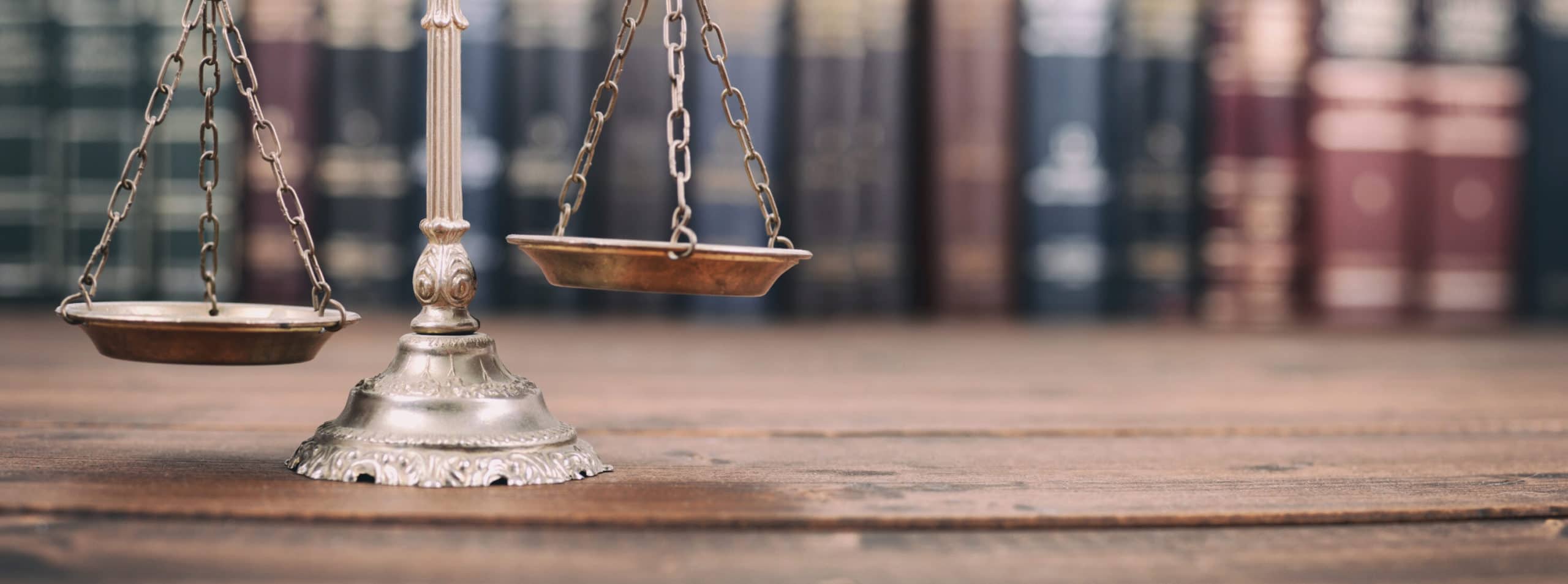If you have been convicted of and sentenced for a misdemeanor or a felony and believe you were wrongly convicted or sentenced, you have limited options to overturn the judgment of conviction or to change the sentence. One such option is an appeal. California law allows a person convicted of and sentenced for a crime to challenge the conviction or sentence.
Table of Contents
California’s Court System
In the California court system, there are superior courts, which conduct trials; courts of appeal, which review trial court judgments; and the Supreme Court of California, which hears only cases involving important questions of law. The courts operate independently; a Court of Appeal does not hold trials and a Superior Court does not hear appeals. To get from the trial court to reviewing courts, you must take certain steps within a specified time or lose your opportunity to have the judgment of the trial court vacated.
Appeals—Procedure
If you are convicted of a crime and believe that the verdict or sentence was erroneous, you can appeal the case.
Misdemeanors
If you were charged with and convicted of a misdemeanor, the proper procedure is to file an appeal with the Appellate Division of the Superior Court (the court that held the trial). You have only 30 days from the date the judgment of the Superior Court was rendered to file.
If the Appellate Division does not find in your favor, you may apply to the court to certify your case for transfer to the Court of Appeal if transfer is necessary to make sure that decisions across courts are uniform or to settle an important question of law. Those are the only bases for certification. The court may, on its own motion, certify the case for transfer or may certify it based on your application. You can file your application to certify a case for transfer at any time after the record on appeal is filed in the Appellate Division, but you must file no later than 15 days after the decision of the Appellate Division is sent to the parties.
If the Appellate Division denies your application, you may file a Petition for Transfer directly in the Court of Appeal. You may do this only if you already applied for a certification for transfer with the Appellate Division and it was rejected. Such a petition requests the Court of Appeal to transfer the case from the Appellate Division to the Court of Appeal for a decision. Once again, the only ground for requesting a Petition for Transfer is to ensure that decisions across courts are uniform or to settle an important question of law. A Petition for Transfer can be filed after the Appellate Division issues its decision on the application for transfer but no later than 15 days after that decision becomes final.
If the Court of Appeal grants the motion for transfer, it has the option to allow briefs, which are written arguments by the parties, but it does not have to do so. It can decide the case based on the record of the proceedings. Not all of the issues raised by the parties have to be addressed in the Court of Appeal. The Court may transfer the remaining issues back to the Appellate Division, and it can vacate the transfer order entirely and send the case back for further proceedings.
A decision on the merits by the Court of Appeal after transfer of the case may be appealed to the Supreme Court of California.
However, if the Court of Appeal denies the petition for transfer, your appeal is over. You do not have the right to seek further review of the judgment against you in the Supreme Court of California.
Felonies
If you were charged with a felony and were convicted of a felony or misdemeanor, you may file a Notice of Appeal in the Superior Court. The notice of appeal must be filed within 60 days after rendition of the judgment against you.
If you were convicted after pleading guilty or nolo contendere to the charges against you, you must file a notice of appeal as well as a written statement showing reasonable constitutional, jurisdictional, or other grounds implicating the legality of the proceeding in which you pled guilty or nolo contendere. The proceedings would not be legal if, for example, you were not informed of the immigration consequences of the plea or if the plea was otherwise not knowingly or voluntarily made. You must wait for the Superior Court to execute and file a Certificate of Probably Cause, which indicates its agreement that probable cause exists that the proceeding in which you pled guilty or nolo contendere was illegal in some manner.
If the court does not agree and denies the Certificate of Probable Cause, you must file what is known as a Petition for a Writ of Mandamus in the Court of Appeal. The Petition asks the appellate court to order the trial court to reverse its denial of your application for the certificate. This is not the same as an appeal to the Court of Appeal. The Court does not examine the merits of your case, it merely looks at whether the trial court was correct in denying the Certificate of Probable Cause. If the Court of Appeal grants the petition, then you may appeal and have the merits of your cases heard. If the court rejects the petition, your appeal is at an end.
Even if you pled guilty or nolo contendere, you need not obtain the Certificate of Probable Cause if your appeal is based on the denial of a motion to suppress or on grounds that arose after entry of the plea. You may file your Notice of Appeal in the Superior Court.
Once the Notice of Appeal is filed, the Court of Appeal in the district in which the Superior Court sits must address the merits of the appeal.
To learn what appeals options may be available on your case, contact the California criminal Appeals lawyers with Spolin Law P.C. for a free consultation.
Appeals—Reasons for Appeals
You cannot appeal a judgment against you just because you did not like the outcome. The purpose of a direct appeal is not to re-try the case. The Appellate Division and the Court of Appeal generally do not take new testimony or examine new evidence. The only issue is whether “prejudicial error” occurred during your trial. An “error” means an error of law, not fact. “Prejudicial” error is an error that prejudices you; that is, an error that affected the outcome of your trial. If there is a reasonable probability that but for the error, the outcome would have been different, the error is prejudicial. Other errors not affecting the outcome of the trial do not give the Court of Appeal justification to overturn the judgment of the trial court.
The Court of Appeal starts with the assumption that the trial court made no errors of law, and it is up to you to convince the court that a prejudicial error was made. Such prejudicial errors can include:
- Errors of law made by the judge in presiding over the trial. Such errors may include the wrongful admission or exclusion of evidence; charging the jury with instructions that do not conform to the correct law; or imposing a sentence that is inconsistent with the law.
- Misconduct by the prosecutor. Prosecutorial misconduct includes the failure to disclose “exculpatory” evidence (evidence tending to show that you did not commit the crime with which you were charged); the introduction of false evidence; commenting on your exercise of the Fifth Amendment right not to testify; the use of improper arguments, such as appealing to the sympathy of the jury rather than arguing that the law and facts support your conviction; or unlawful discrimination in jury selection (keeping a discrete class of persons from sitting on the jury).
- Ineffective assistance of the criminal defense attorney. Every person charged with a felony has a Sixth Amendment Constitutional right to the effective assistance of trial counsel, whether that counsel is appointed or retained. If the attorney’s conduct fell below an objective standard of reasonableness under prevailing professional norms, you were deprived of the effective assistance of counsel. Such a deprivation would be a prejudicial error.
- Misconduct by the jury. In reaching its verdict, the jury may consider only the evidence and arguments presented in court. If the jurors consider matters obtained outside the courtroom or conduct their own experiments or investigation, that conduct would be prejudicial error. Likewise, if the jury decides the case by lot rather than by the independent decision of each juror, that would be prejudicial error.
- Lack of sufficient evidence to support the verdict against you. The Court of Appeal does not re-try your case, but it does look at all the evidence in the record to determine whether substantial evidence established each element of the crime with which you were charged beyond a reasonable doubt.
Appeals—Decision of the Court of Appeal
The Court of Appeal determines whether prejudicial errors occurred during your trial. If it finds prejudicial errors, it does not automatically reverse the judgment against you and set you free. The court can find you guilty of a lesser offense, order a new trial, or modify your sentence. The case then goes back to the trial court to carry out the ruling.
If the Court of Appeal denies appeal, you have the option of filing a “Petition for Rehearing.” If the Court of Appeal agrees to hear the case again, it will allow you to re-argue your case.
If the Court of Appeal rejects your appeal and any Petition for Rehearing, you must file a “Petition for Review” in the California Supreme Court within 10 days days of the date that the Court of Appeal’s decision became final.
Appeals—California Supreme Court
The California Supreme Court does not review every decision of the Courts of Appeal. The law states that the Court may accept a case in the following circumstances:
- when necessary to secure uniformity of decision or to settle an important question of law;
- when the Court of Appeal lacked jurisdiction;
- when the Court of Appeal decision lacked the concurrence of sufficient qualified justices; or
- for the purpose of transferring the case to the Court of Appeal for such proceedings as the Supreme Court may order
If the Court grants the Petition for Review, it will decide the case on the merits. However, it will not consider any matter that you did not already raise in the Court of Appeal.
If the Court denies the petition, the state appeals process is at an end. You have options beyond the state appeals procedure, such as filing with the United States Supreme Court, but those options are beyond the scope of this article.
The appeals process in California is designed to give you an opportunity to have a court other than the trial court review your case and determine whether prejudicial error occurred in your conviction or in the imposition of the sentence. The procedures and timelines for filing an appeal can be complicated, and you can lose your right to have your case reviewed if you do not follow them. Submitting a brief in support of your appeal can involve complex issues of law that, if nor properly addressed, may result in a decision against you. Having an experienced attorney accomplished in appellate law is necessary to ensure that your case is properly heard and decided. You get only one chance to appeal; once you reach the end of the process, you cannot appeal again.




